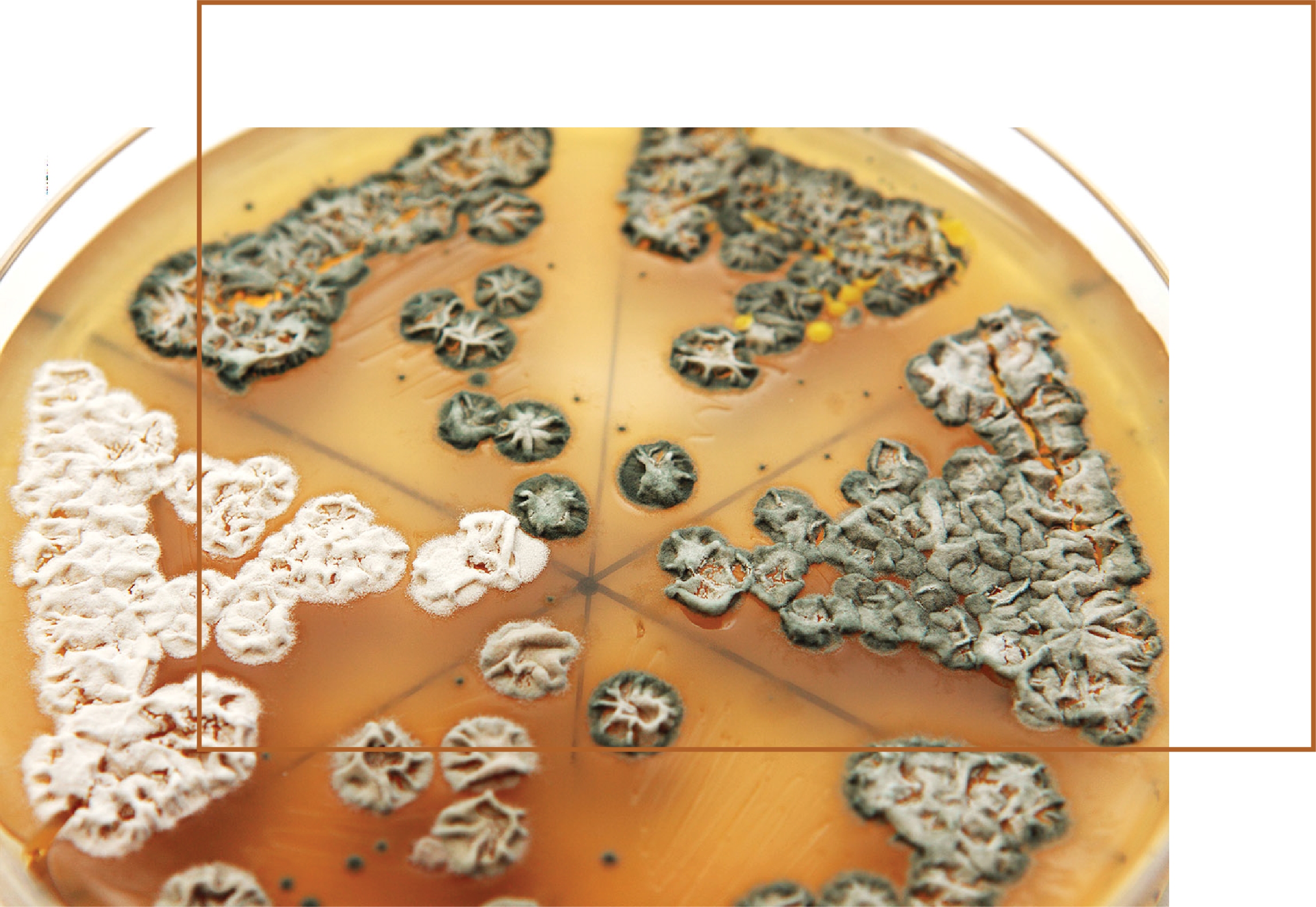BindGenic
Toxin Binding & Microbiome Support
Promotes detoxification by binding and removing harmful toxic compounds from the body, while protecting the GI tract and supporting the microbiome to optimize immunity and digestive functions.
Promotes detoxification by binding and removing harmful toxic compounds from the body, while protecting the GI tract and supporting the microbiome to optimize immunity and digestive functions.
Take 2 capsules on an empty stomach, preferably at least 2 hours away from meals, supplements, or pharmaceuticals. You can gradually increase the dosage as needed. It is recommended to take BindGenic by itself before bed.
**Individual needs may vary; please consult your practitioner before altering the prescribed doses or protocols.

Pollutants and toxins in the environment are harmful because they can disrupt biological processes, damage cells, and interfere with the body’s natural defenses. This can lead to various health problems and diseases. Toxins are found everywhere; they exist in our food, water, air, cleaning products, cosmetics, building materials, furniture, and household products. Even normal cellular metabolism generates byproducts that can be harmful to human health if not properly controlled. Things like excess estrogen and excitotoxins, which are meant to be excreted, can be reabsorbed if drainage is suboptimal.

BindGenic was formulated to bolster the body’s detoxification processes, protect gene expression, and support the microbiome. It was designed to trap toxins and facilitate their elimination through the digestive tract. By assisting the body in detoxification, it plays a vital role in mitigating die-off reactions (Herxheimer reactions), managing mold toxicity, detoxifying PFAS, phthalates, and hard-to-eliminate environmental pollutants. It also facilitates the removal of toxic heavy metals such as mercury, lead, cadmium, and arsenic.
This remarkable drainage-supporting agent serves a crucial role in supporting digestive health and the immune system due to its unique microbiome-enhancing properties that have been proven to be beneficial in managing conditions like SIBO (small intestinal bacterial overgrowth) and leaky gut. Cleansing your body of toxins can help improve your digestive system, microbiome, immune system, and the overall function of your body. Whether you’re looking to enhance your detoxification capabilities, support the gut, or improve your overall health and wellness, BindGenic is a must.
Binding, capturing, and removing cellular debris, toxins, heavy metals, and excess hormones from the intestinal tract can provide immediate relief from digestive discomfort. It also serves as a preventive strategy, reducing the risk of long-term health challenges associated with toxin accumulation. Reducing the toxic load is essential for maintaining healthy physiology, especially in today’s environment with record-setting levels of exposure to pollutants.
Minimizing toxin exposure and promoting a healthy internal environment free of gene disrupting contaminants, enables the body to regulate gene expression and metabolism at optimal efficiency.
Improving drainage is crucial for optimal digestive function and reducing gastrointestinal issues such as gas, bloating, food poisoning, diarrhea, and upset stomach. It can also help to reduce ‘die off symptoms’ when trying to eliminate pathogens.
Toxins can damage the intestinal lining and increase intestinal permeability, leading to a condition known as leaky gut. This often occurs when toxins disrupt the microbial balance in the colon.
The unique matrix of BindGenic enhances the effectiveness of its binding properties and ensures thorough removal of captured substances from the body. This not only inactivates toxins, but also prevents the reabsorption of toxins once they are captured.
When toxins and waste are efficiently eliminated, it helps diversify and support a strong, healthy microbiome. This ensures long-term digestive health and immunity, while fortifying the various gut-organ axes (e.g., gut-brain axis, gut-skin axis, or gut-liver axis).
Toxins are detrimental to gene expression! According to information from the Environmental Protection Agency (EPA), there are thousands of synthetic chemicals, many of which we can come into contact with in a single day. Many toxins accumulate in the fatty tissue of living animals and human beings.1 The concentrations of toxins in these tissues can become magnified as you move up the food chain.2 Fish, poultry, beef and feedstock animals have many in their tissue. Since humans consume these toxins from meat and pesticides on plants, we tend to have the highest concentrations of these chemicals just through diet alone, making us more susceptible to both acute and chronic toxic effects.
In 1995, the United Nations Environment Programme expanded its research and investigation into common toxins, initially focusing on what became known as the “Dirty Dozen” – a group of 12 highly persistent and toxic chemicals we are exposed to on a day-to-day basis. This list includes aldrin, chlordane, DDT, dieldrin, endrin, heptachlor, hexachlorobenzene, mirex, polychlorinated biphenyls, polychlorinated dibenzo-p-dioxins, polychlorinated dibenzofurans, and toxaphene. While some of the toxins are no longer used, a few continue to be used in developing countries. Unfortunately, many discontinued toxic chemicals are still found in our environment to this day.3 These toxins wreak havoc on the way our genes function and manage health. Therefore, it is essential to address the challenges posed by the unavoidable modern toxic lifestyle.
Toxins can downregulate BDNF, affecting every aspect of mental health.4 BDNF plays an important role in neuronal survival and growth, serves as a neurotransmitter modulator, and participates in neuronal plasticity, all of which are essential for learning and memory.5 It is widely expressed in the central nervous system, gut and other tissues.
Toxins commonly found in homes can alter expression of this important tumor suppressor gene. These toxins are found in glues, adhesives, cleaning products, paint strippers, tobacco smoke and gasoline. The environmental presence of a toxin known as benzene is a result of our utilization of petroleum products, and it has the ability to directly modify the expression of the CDKN2B gene.6
BPA and toxins cause endocrine disrupting issues due to its weak binding affinity for the estrogen receptors ERα and ERβ.7 The HOX genes are involved in the development of mammary glands and production of milk and many other health managing responsibilities.8 BPA affects HOX genes associated with embryogenesis and post-natal development, disrupting their expression correlates with a variety of cell cycle problems within breast tissues.
Toxins directly interfere with the expression of the family of LINE-1 genes, which regulate cell functions related to mutations and cancer activities.9
The family of CYP genes produce a superfamily of cytochrome P450 enzymes that utilize oxygen to metabolize toxic compounds like environmental toxins, pharmaceuticals, and some hormones.10 Tributylin (TBT), a toxin abundant in sea life due to its use in marine operations, inhibits CYP genes’ ability to produce enzymes for detoxification. Humans can be exposed to these compounds and potentially experience headaches, fatigue, respiratory issues, and more. Long-term exposure can also damage some internal organs such as the kidneys and liver.
BindGenic contains ingredients that bind and inactivate toxins during the final stages of drainage in the colon. It prevents these toxins from getting inside the body or being reabsorbed during the detoxification process. Exposure to common toxins can disrupt many genes. Therefore, by helping reduce the toxic load, we can keep these toxins out of the body, ensuring optimal genetic expression and metabolic functions.

Absorbs and excretes toxic chemicals, microbial wastes, and heavy metals, while also preventing the absorption and resorption of toxins back into the body through the intestines.11
The phytochemicals and oils in black cumin are known to regulate genes associated with inflammation, cytotoxicity, and cellular immunity, all of which impact a wide variety of systems, especially detoxification pathways.15
When derived from organic plant sources, humic acid works with the body’s mineral processes and immunological balance. It also has a positive effect on the microbiome, influencing immunity, hormones, brain functions, and detoxification.12
A humate from organic plant sources with the ability to bind and eliminate toxins in the body, including heavy metals, making it a powerful detox ally. It has also been shown to improve the gut flora, nutrient absorption, and alleviate disorders related to the gut.13
Contains anthraquinone compounds that work with the normal intestinal mucosal lining. Functioning as a natural hydrogogue, it helps draw water into the intestines, facilitating more efficient elimination of toxins.16
Pelargonium, belonging to the geranium plant family, has long been utilized as a traditional medicinal herb for treating various health conditions. Studies have demonstrated its effectiveness in enhancing the body’s natural detoxification mechanisms.17
Helps with normal cellular purification activities, energy production, nerve transmissions, and expulsion of toxins from deep within tissues.
Studies on apple fiber demonstrate its ability to reduce exposure to endotoxins from pathogens in the gut microbiome. Additionally, it supports regular and productive bowel movements, aiding in the elimination of toxins from the body.18
Do not take at the same time as nutritional (mineral) supplements or prescription medications to prevent potential binding with those elements and molecules.
**It is always recommended that you consult your practitioner prior to adding any new supplement to your regimen if you are pregnant, breastfeeding, experiencing renal failure, undergoing an organ transplant(s), managing diabetes with insulin, or are taking medication(s) for any pre-existing conditions.**
All ingredients are tested before use for: